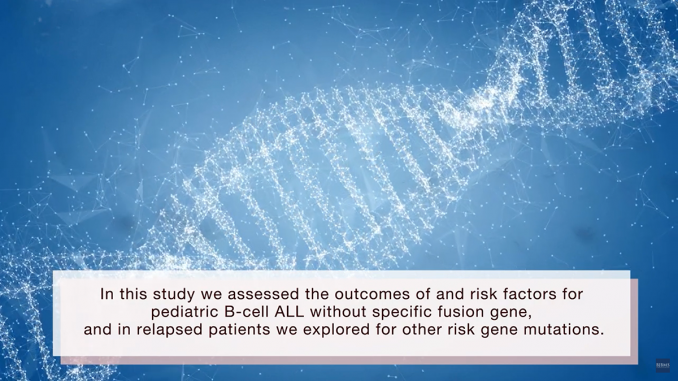
Acute lymphoblastic leukemia is the most common cancer in children, and precursor B-cell acute lymphoblastic leukemia accounts for approximately 75-80% of newly diagnosed pediatric ALL cases. Previous studies have shown that fusion genes are the most important cause of pediatric B-cell acute lymphoblastic leukemia, and the prognosis of different fusion genes is significantly different. Specific fusion genes play important roles as risk factors for strategic treatment. However, not all patients are positive for fusion genes. Therefore, we tried to assess the outcomes of and risk factors for pediatric B-cell acute lymphoblastic leukemia without specific fusion genes in three Chinese institutes, and then we used the next-generation sequencing in relapsed patients to try to reveal more risk gene mutations in pediatric B-cell acute lymphoblastic leukemia.
We retrospectively analyzed clinical and laboratory findings, treatment responses and outcomes in 283 B-cell acute lymphoblastic leukemia patients. Traditional parameters and treatment responses at different time points were evaluated to classify risk groups and adjust treatment strategy. Treatment-related mortality was found in 11 (3.89%) patients, 49 (17.31%) patients relapsed, and ten-year prospective event-free survival was 78.2±2.5%; adverse and unreported genetic abnormalities were discovered in 25 bone marrow relapse patients. Univariate analysis revealed that good responses of bone marrow smears at time point 2 and minimal residual disease levels at time point 2 and 3 were strongly associated with prolonged prospective event-free survival. Multivariable analysis of outcomes and hazard ratios revealed that a positive minimal residual disease level was a key risk factor.
Based on our study, we believe that traditional risk factors and poor prednisone response can be overcome by modified chemotherapy, and hematologist should focus on minimal residual disease level monitoring. And we believe that next generation sequencing is helpful to discover more risk-related molecular abnormalities, especial for the “negative fusion genes patients”.
Check out the video summary of this study: B cell acute lymphoblastic leukemia without specific fusion genes – YouTube
Reference:
Editor: Bakir Kudić
Leave a Reply